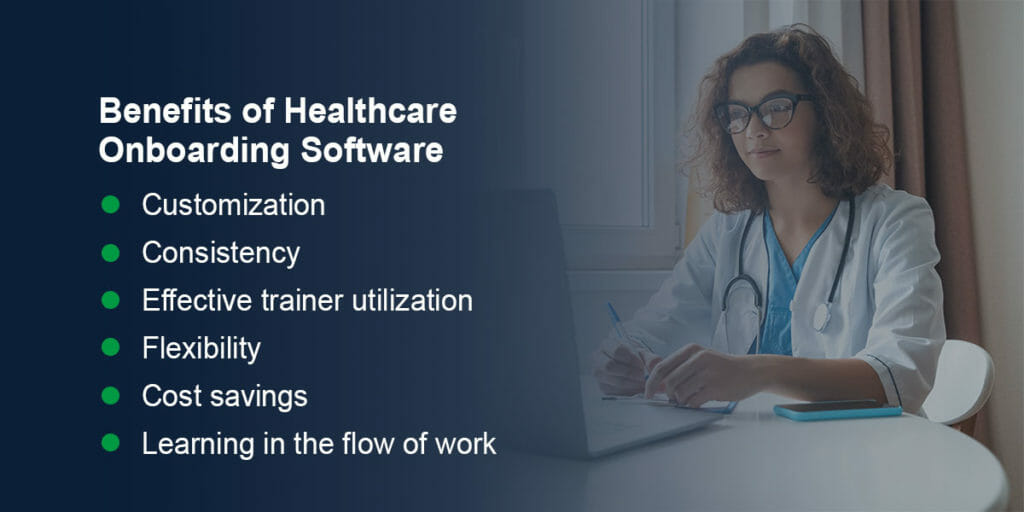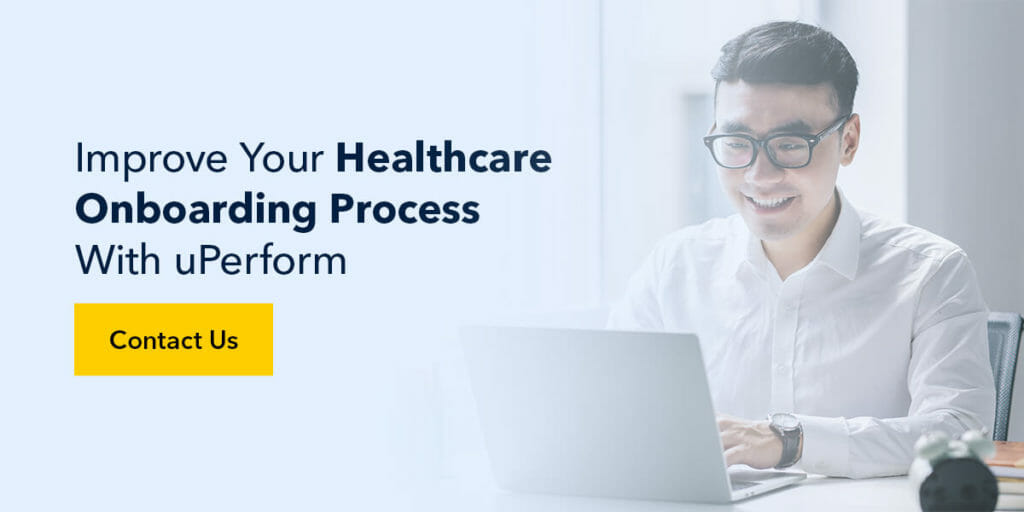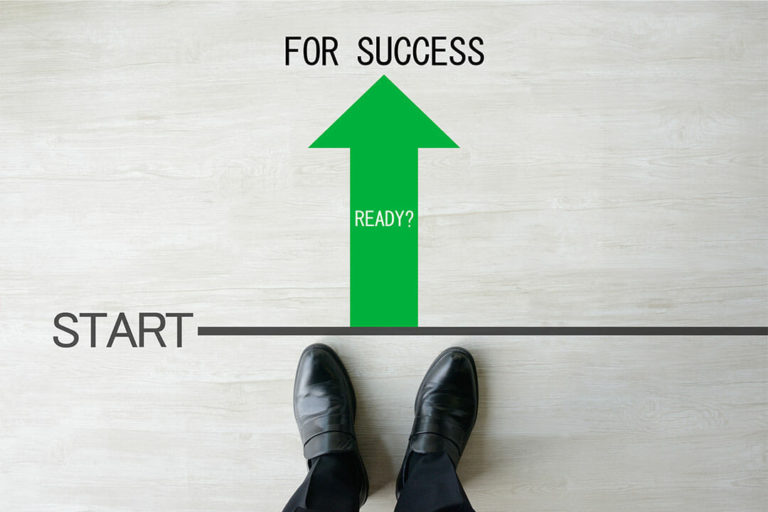First impressions are a big deal in any relationship, including the one between an employee and their employer. Onboarding is the prime opportunity to set the tone for a new hire’s experience. Of course, it’s important to ensure they’re well-trained, but it also plays a key role in cultivating a certain perspective of your organization and setting new hires up for success.
Healthcare onboarding can include a wide range of complex tasks, like learning vital information on regulations and navigating a sophisticated electronic health record (EHR). To provide the best onboarding experience for healthcare providers, you’ll need to offer an intuitive, consistent and enjoyable process that reflects your organization’s goals and values. Let’s explore how you can make it happen.
Why Is It Important to Create the Best Onboarding Experience?
Onboarding is one of the first substantial interactions a new hire will have with a healthcare organization. It helps them understand their role, the systems and interactions between employees. It is your opportunity to set new hires up for success by giving them the tools and knowledge they need to perform their jobs effectively and efficiently. New hires should have all available resources at their fingertips.
This is especially true for working with new systems, like your EHR. KLAS Arch Collaborative data shows that the quality of initial training significantly impacts clinician satisfaction with the EHR. Getting ahead of EHR satisfaction early can help prevent burnout and, by extension, turnover, down the road. Consider that the top causes of burnout in healthcare include excessive workloads and administrative burdens.
If an clinician isn’t well versed in best practices for their EHR workflow, they’re likely creating their own workarounds and spending more time than they need to complete tasks. Proper onboarding can help ensure new hires can use the program efficiently and minimize the need for after-hours charting that can affect job satisfaction and mental health.
An enjoyable onboarding experience can help clinicians connect with your organization and understand what you’re all about. It’s the ideal opportunity to put your mission and values front and center, so new hires can see them in action. This is a great time to build a foundation for loyalty among new hires, so they feel proud to be a part of your health system.
Supporting new hires with a robust onboarding experience can foster trust in leadership and build loyalty, helping you retain clinicians and reduce turnover. Hiring new employees is a costly process, and retaining your existing employees is usually the more cost-effective option.
Overall, onboarding creates a strong foundation for your clinicians to grow and thrive within your organization.
Healthcare Onboarding Best Practices
When creating your program, following some simple best practices can help ensure your clinicians get the best onboarding experience possible:
- Focus on empowering new hires: Knowing basic information is just one part of excelling in a position. Clinicians also need to feel capable and confident in their roles. Explore how you can empower them to take charge and truly embrace their new position. Include collaborative experiences that make them feel involved.
- Treat all providers equally: The healthcare industry can sometimes feel hierarchical, but it’s important not to let these ideas seep into onboarding. Each care provider plays a vital role in your organization’s complex workforce, and their onboarding should be just as comprehensive as higher-paid colleagues.
- Show your culture and values: Infuse your culture and values into your onboarding process. By the time they’re finished, workers should know what you stand for and how they can support overarching goals.
- Break up training into bite-sized chunks: Learners begin forgetting what they’ve learned as soon as they leave the classroom. While KLAS Arch Collaborative recommends a minimum of 7 hours of initial training, it doesn’t need to be in one session. Try breaking up training into bit-sized chunks and allow new hires to learn on the job where possible. It will help them retain important information long term.
- Stay organized with a centralized system: From assessments to content maintenance, healthcare training teams have a lot to keep track of. A centralized learning platform can help you stay organized and track learners’ progress and content lifecycle throughout onboarding.
- Get feedback and make improvements: Always be open to feedback from your trainees. Solicit feedback regularly and make sure learners feel comfortable bringing up concerns. Take the feedback to heart and stay committed to continuous improvement.
- Keep the training going: Remember that training is never finished. Evolving regulations, new processes and other changes make ongoing education, including refresher training, a necessity for any healthcare organization. Keep in mind that onboarding can be a long process, too. Try implementing 30/60/90-day plans that establish benchmarks and touchpoints to fill any gaps. Dr. CT Lin of UCHealth discusses a 30/60/90-day intermittent learning reinforcement strategy in this Becker’s Healthcare podcast:
“Then we have a touch base at 30 days and at 60 days and at 90 days. And you have an in-person 101 coach who sits with you and makes sure that we’re looking at your performance, and we’re trying to optimize your performance.
We’ve now taken that eight hours you would have spent in classroom all at once where you’re not paying attention after the first two hours and brought adult learning theory into it with intermittent reinforcement, which I think works quite well.” — Dr. CT Lin, CMIO, UCHealth
Streamline the Process With a Digital Training & Support Platform
Healthcare onboarding involves many moving parts and can be time-consuming if you don’t have the right tools. For large hospital systems spanning multiple locations, scaling onboarding efforts to keep pace with growth while providing a standardized, positive training experience is even more difficult. Investing in a digital training and support tool can help you scale your training efforts and lessen the burden on training teams. It also ensures a better onboarding experience for new hires. It offers benefits like:
- Customization: Training can be individualized to the user’s role, allowing learners to drill down to what’s important. They can bypass irrelevant lessons and focus on what will help them meet their goals and fulfill their job duties.
- Consistency: Customization is vital, but so is consistency. A standardized curriculum allows you to offer consistent content delivery, regardless of location or trainer.
- Effective trainer utilization: With digital learning, trainers can spend more time as valuable coaches rather than lecturers. They become consultative resources to help further personalize the learner’s education and customize their EHR experience.
- Flexibility: Learners can complete training when and where it works for them, whether that means completing training in between patients or during down time. Access from anywhere and a self-paced curriculum allows them to work how they want to.
- Cost savings: Traditional onboarding and training often involves travel costs associated with sending instructors or students to different locations. It also entails logistical challenges, like arranging classroom space and pulling people away from patient care. Onboarding software and digital or hybrid learning can eliminate these costs for more efficient training.
- Training in the workflow: Some digital learning tools allow for software users to access learning and support materials directly in the workflow. This can improve their confidence with the software, knowing they have a safety net to fall back on. It also saves time searching for help, allowing care providers to get back to their patients faster.
Improve Your Healthcare Onboarding Process With uPerform
uPerform is a robust digital learning platform with a range of tools to improve your onboarding process. Save time, reduce costs and create a more enjoyable experience for clinicians. uPerform has helped healthcare organizations reduce the time a learner spends searching for help by 45% and bring down instructor-led training costs by 40%. With resources for content creation, management and delivery and on-demand digital learning tools, you can boost productivity and help your staff stay prepared for whatever comes next.
Reach out to us today to learn more or request a demo and see how uPerform can transform your onboarding strategy.
Related Articles
Case Study: Gundersen Health System
To illustrate the power of a positive onboarding experience, let’s look at Gundersen Health System. This not-for-profit health system spans 22 Wisconsin, Iowa and Minnesota counties and uses the Epic EHR. With over 8,500 users, Gundersen decided to revisit its training processes to keep pace with growth and quarterly Epic upgrades. uPerform® was able to switch Gundersen to digital learning in two months and they quickly started seeing the benefits:
- One instructor-led training for new nurses dropped from a 12-hour experience to one that took just four hours.
- Trainers providing at-the-elbow customization maximized the value of time spent with clinicians.
- Virtual classes saved new hires from driving up to two hours several days a week for orientation training.
Gundersen is now ready to tackle the future of onboarding and clinician education with its new proctor-led lab and digital curriculum.





